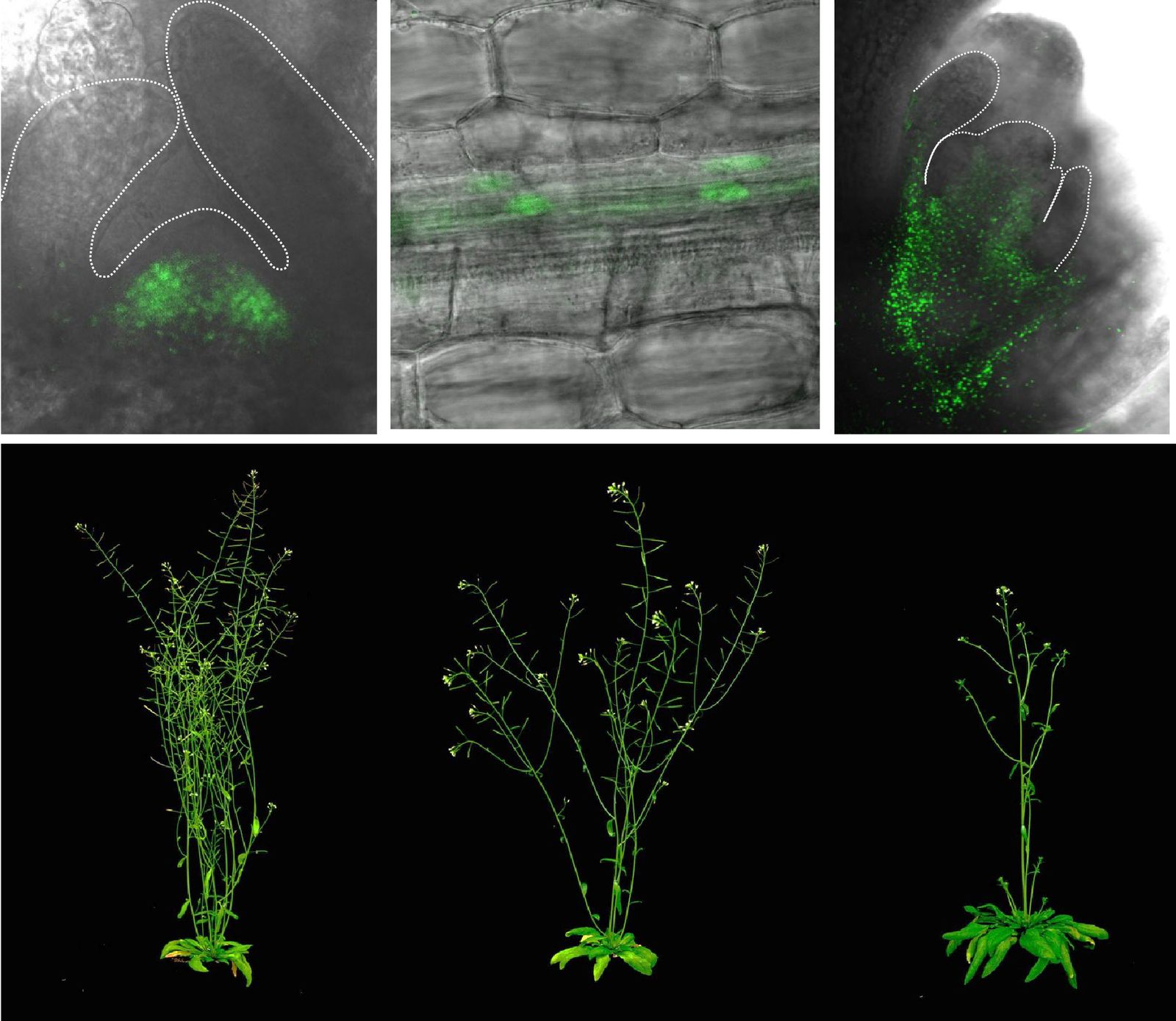Dr. Franziska Fichtner
Research Focus
My research focusses on the connection between plant metabolism and development. My group is especially interested in the sugar-signalling metabolite trehalose 6-phosphate (Tre6P). It has been demonstrated that Tre6P is both a sucrose-specific signal and a negative feedback regulator or sucrose levels. This means that Tre6P levels are not only responsive to changes in sucrose supply and act as a signal for sucrose availability, but also that the levels of Tre6P are sensed by the plant to modulate sucrose levels in return. This homeostatic function of Tre6P is thereby somewhat analogous to the insulin-glucagon system that regulates blood glucose content in animals and humans. As sucrose is the main transport sugar in most land plants, Tre6P is a key signal that helps plants to use their carbon resources in an efficient manner.
Tre6P is essential in the model plant Arabidopsis thaliana, as mutations in the main Tre6P synthase (TREHALOSE-6-PHOSPHATE SYNTHASE1) are embryo lethal in Arabidopsis plants. Using tagged version of TPS1, we demonstrated that Tre6P synthesis is predominantly located in meristematic tissues like the shoot apical and axillary meristems, as well as in the vasculature of shoots and roots.
My work and the work of others has further demonstrated that altering Tre6P levels results in a reprogramming of metabolism and many phenotypic alterations in plants, including changes in flowering time, shoot branching, and root development. Tre6P thereby acts locally in sink tissues, so sugar consumers, and source tissues, so net sugar producers, as well as systemically in the vasculature. Especially its systemic role in the vasculature suggests that Tre6P might be a new phytohormone-like signalling metabolite.
At the moment we are investigating if Tre6P does indeed have has such phytohormone-like behaviour. We are further trying to understand how Tre6P modulates root architecture, if it is involved in orchestrating the trade-off between shoot and root growth, and how it interacts with known phytohormones. Ultimately, we want to understand how Tre6P shapes plant architecture in response to sugar supply and to elucidate the molecular mechanisms involved.

The five most important publications
- Fichtner, F, and Lunn, JE (2021). The role of trehalose 6-phosphate (Tre6P) in plant metabolism and development. Annual Review of Plant Biology 72: 737-760.
- Fichtner, F, Barbier, F, Annunziata, M, Feil, R, Olas, J, Mueller‐Roeber, B, Stitt, M, Beveridge, CA, and Lunn, JE (2021). Regulation of shoot branching in Arabidopsis by trehalose 6‐phosphate. New Phytologist 229: 2135–2151.
- Fichtner, F, Olas, JJ, Feil, R, Watanabe, M, Krause, U, Höfgen, R, Stitt, M, Lunn, JE (2020). Functional features of TREHALOSE-6-PHOSPHATE SYNTHASE1 - an essential enzyme in Arabidopsis thaliana.The Plant Cell 32: 1949-1972.
- Fichtner, F, Barbier, FF, Kerr, S, Dudley, C, Cubas, P, Turnbull, C, Brewer, P, and Beveridge, CA (2022). Plasticity of bud outgrowth varies at cauline and rosette nodes in Arabidopsis thaliana. Plant Physiology 188(3): 1586-1603.
- Fichtner, F, Barbier, FF, Feil, R, Watanabe, M, Annunziata, MG, Chabikwa, TG, Höfgen, R, Stitt, M, Beveridge, CA, and Lunn, JE (2017). Trehalose 6-phosphate is involved in triggering axillary bud outgrowth in garden pea (Pisum sativum L.). The Plant Journal 92: 611–623.
